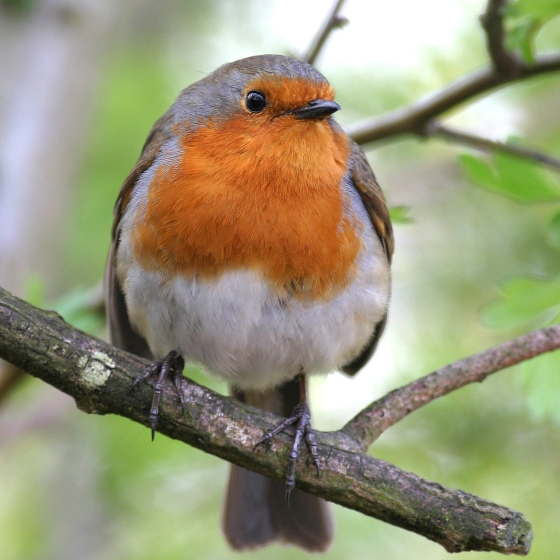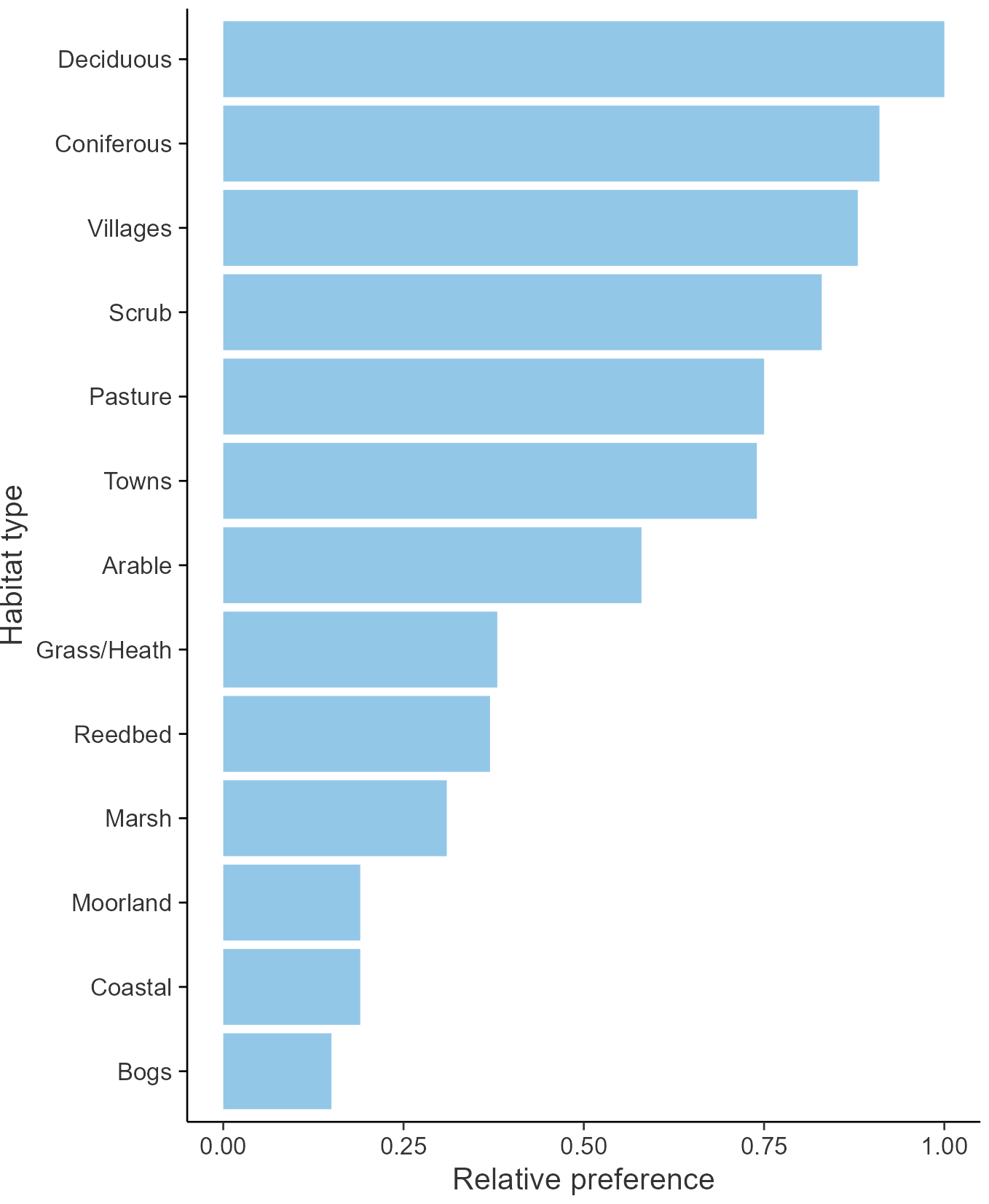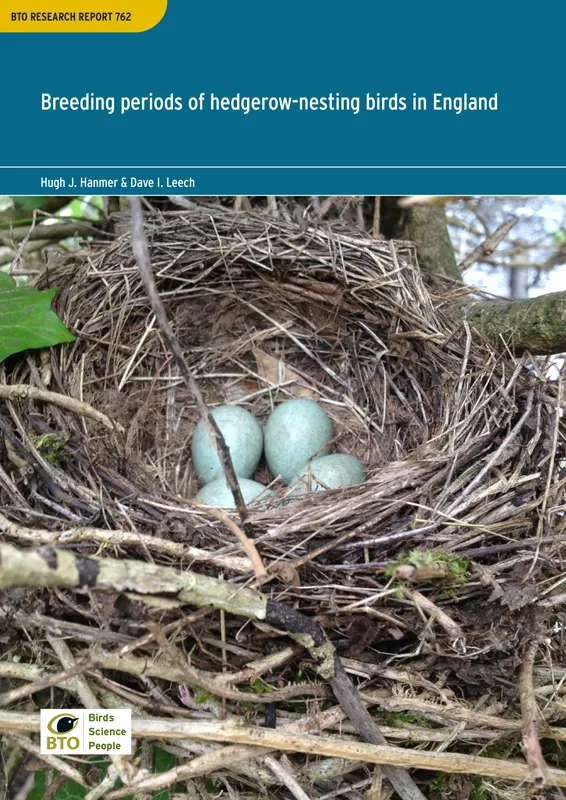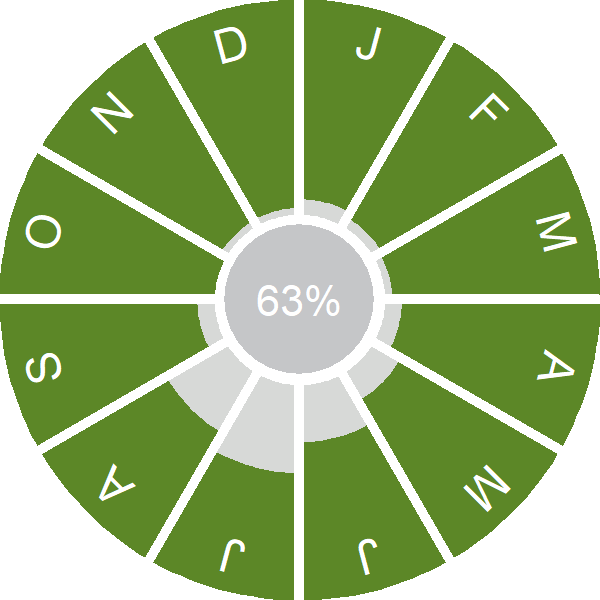Robin

Introduction
The Robin's red breast and habit of living close to humankind makes it one of our most familiar birds.
Robins are widely distributed in Britain & Ireland throughout the year, from Shetland to the Channel Islands, apart from on the highest mountain tops. Robin breeding numbers increased through the last part of the 20th century and have been fairly stable since, albeit with some fluctuations.
The Robin is both a resident and also a migrant visitor to Britain during the winter months, when birds from northern and eastern Europe help to swell numbers. During particularly cold weather this pugnacious little bird can be seen sharing bird tables with several other Robins, all of them trying to defend the food source they have found.
- Our Trends Explorer gives you the latest insight into how this species' population is changing.

Key Stats
Identification
ID Videos
This section features BTO training videos headlining this species, or featuring it as a potential confusion species.
Nightingale and Other Night Singers
#BirdSongBasics: Robin and Blackbird
Songs and Calls
Song:
Alarm call:
Status and Trends
Conservation Status
Population Change
Robins have increased markedly since the mid 1980s, according to both CBC/BBS and CES results, having been set back earlier by a succession of cold winters. The CES and BBS data show that marked and significant annual fluctuations occur in numbers, perhaps in response to winter weather, although these are not evident in the smoothed trends: numbers dropped sharply between 2008 and 2012 when three severe winters occurred, but recovered quickly, a further drop occurred following severe weather in February/March 2018 (the 'Beast from the East'). The BBS map of change in relative density between 1994-96 and 2007-09 indicates that increases were strongest over that period in northwestern Britain, while some decrease occurred in Cornwall and south Devon. There has been an increase across Europe since 1980 (PECBMS: PECBMS 2020a>).
Distribution
Robins are widespread throughout Britain & Ireland, breeding in 94% of all 10-km squares, and absent only from some of the Scottish islands and from exposed uplands. Densities are highest in Ireland and southern England and lowest in the uplands, especially above 400 m elevation.
Occupied 10-km squares in UK
or view it on Bird Atlas Mapstore.
or view it on Bird Atlas Mapstore.
European Distribution Map
Distribution Change
There has been a 2% range expansion since the 1968–72 Breeding Atlas, with gains in the Outer Hebrides, Caithness and the Northern Isles, probably aided by increased tree planting. Atlas data and other evidence points to an increase in Robin densities in many parts of the UK.
Change in occupied 10-km squares in the UK
or view it on Bird Atlas Mapstore.
or view it on Bird Atlas Mapstore.
Seasonality
Robin is a common and widely recorded species, present on almost 70% of complete lists, though recording dips in late summer after breeding.
Weekly pattern of occurrence
The graph shows when the species is present in the UK, with taller bars indicating a higher likelihood of encountering the species in appropriate regions and habitats.

Habitats
Breeding season habitats
Relative frequency by habitat
The graph shows the habitats occupied in the breeding season, with the most utilised habitats shown at the top. Bars of similar size indicate the species is equally likely to be recorded in those habitats.

Movement
Britain & Ireland movement
Foreign locations of birds ringed or recovered in Britain & Ireland
Dots show the foreign destinations of birds ringed in Britain & Ireland, and the origins of birds ringed overseas that were subsequently recaptured, resighted or found dead in Britain & Ireland. Dot colours indicate the time of year that the species was present at the location.
- Winter (Nov-Feb)
- Spring (Mar-Apr)
- Summer (May-Jul)
- Autumn (Aug-Oct)

European movements
EuroBirdPortal uses birdwatcher's records, such as those logged in BirdTrack to map the flows of birds as they arrive and depart Europe. See maps for this species here.
The Eurasian-African Migration Atlas shows movements of individual birds ringed or recovered in Europe. See maps for this species here.
Biology
Productivity and Nesting
Nesting timing
Egg measurements
Clutch Size
Incubation
Fledging
Survival and Longevity
Survival is shown as the proportion of birds surviving from one year to the next and is derived from bird ringing data. It can also be used to estimate how long birds typically live.
View number ringed each year in the Online Ringing Report.
lifespan
Survival of adults
Survival of juveniles
Biometrics
Wing length and body weights are from live birds (source).
Wing length
Body weight
Ring Size
Classification, names and codes
Classification and Codes
- Order: Passeriformes
- Family: Muscicapidae
- Scientific name: Erithacus rubecula
- Authority: Linnaeus, 1758
- BTO 2-letter code: R.
- BTO 5-letter code: ROBIN
- Euring code number: 10990
Alternate species names
- Catalan: pit-roig
- Czech: cervenka obecná
- Danish: Rødhals
- Dutch: Roodborst
- Estonian: punarind
- Finnish: punarinta
- French: Rougegorge familier
- Gaelic: Brù-dhearg
- German: Rotkehlchen
- Hungarian: vörösbegy
- Icelandic: Glóbrystingur
- Irish: Spideog
- Italian: Pettirosso
- Latvian: sarkanriklite
- Lithuanian: paprastoji liepsnele
- Norwegian: Rødstrupe
- Polish: rudzik
- Portuguese: pisco-de-peito-ruivo
- Slovak: cervienka obycajná
- Slovenian: tašcica
- Spanish: Petirrojo europeo
- Swedish: rödhake
- Welsh: Robin Goch
- English folkname(s): Redbreast
Research
Causes of Change and Solutions
Causes of change
The causes of change are uncertain as detailed analyses have not been undertaken, but the number of fledglings per breeding attempt increased concurrently with the population increase, whilst survival measures were unchanged, suggesting that increased productivity is the most likely driver.
Further information on causes of change
Improvements have occurred during the period of population increase in the numbers of fledglings per breeding attempt, as measured by nest record data, with a reduction in nest failure rates at the egg stage, although CES productivity measures have been relatively unchanged. The number of fledglings per breeding attempt has decreased more recently which may relate to density-dependent effects. Survival rates, as measured by CES, appear stable. Laying dates have advanced by more than a week since the 1960s.
Information about conservation actions
There are currently no conservation concerns about the Robin, and numbers have increased consistently since the mid-1980s, apart from a brief dip between 2008 and 2012 which was likely to have been caused by severe winter weather. Therefore, no specific conservation actions are currently required to benefit the Robin.
Publications (1)
Breeding periods of hedgerow-nesting birds in England
Author: Hanmer, H.J. & Leech, D.I.
Published: Spring 2024
Hedgerows form an important semi-natural habitat for birds and other wildlife in English farmland landscapes, in addition to providing other benefits to farming. Hedgerows are currently maintained through annual or multi-annual cutting cycles, the timing of which could have consequences for hedgerow-breeding birds.The aim of this report is to assess the impacts on nesting birds should the duration of the management period be changed, by quantifying the length of the current breeding season for 15 species of songbird likely to nest in farmland hedges. These species are Blackbird, Blackcap, Bullfinch, Chaffinch, Dunnock, Garden Warbler, Goldfinch, Greenfinch, Linnet, Long-tailed Tit, Robin, Song Thrush, Whitethroat, Wren and Yellowhammer.
05.03.24
Reports Research reports


